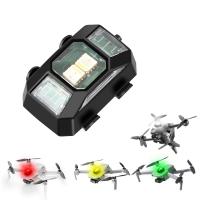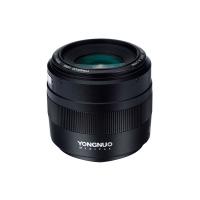How Fast Are Drones?
Drones, also known as unmanned aerial vehicles (UAVs), have become increasingly popular in various sectors, including photography, agriculture, delivery services, and even recreational activities. One of the most frequently asked questions about drones is, "How fast are drones?" The speed of a drone can vary significantly depending on its type, design, and intended use. In this article, we will explore the different factors that influence drone speed, the typical speed ranges for various types of drones, and practical considerations for users who prioritize speed in their drone operations.
Factors Influencing Drone Speed

Several factors can influence the speed of a drone, including its design, weight, motor power, battery capacity, and aerodynamic efficiency. Understanding these factors can help users make informed decisions when selecting a drone for specific applications.
1. Design and Aerodynamics: The design of a drone plays a crucial role in its speed. Aerodynamic designs with streamlined shapes reduce air resistance, allowing the drone to move faster. Racing drones, for example, are designed with speed in mind and often feature sleek, lightweight frames.
2. Weight: The weight of a drone affects its speed and maneuverability. Lighter drones can accelerate more quickly and achieve higher speeds compared to heavier drones. However, lighter drones may also be more susceptible to wind and other environmental factors.
3. Motor Power: The power of the motors determines how fast a drone can fly. High-performance motors can generate more thrust, enabling the drone to reach higher speeds. Racing drones typically have powerful motors to achieve maximum speed.
4. Battery Capacity: The battery capacity influences the drone's flight time and speed. While a larger battery can provide more power, it also adds weight, which can impact speed. Balancing battery capacity and weight is essential for optimizing speed.
5. Propellers: The size and pitch of the propellers also affect the drone's speed. Larger propellers with higher pitch can generate more thrust, allowing the drone to fly faster. However, they may also require more power from the motors.
Typical Speed Ranges for Different Types of Drones
Drones come in various types, each designed for specific purposes. The speed of a drone can vary widely depending on its type and intended use. Here are some typical speed ranges for different types of drones:
1. Toy Drones: Toy drones are designed for recreational use and are generally slower than other types of drones. They typically have a maximum speed of 10-20 mph (16-32 km/h). These drones are suitable for beginners and children who are learning to fly.
2. Camera Drones: Camera drones, used for aerial photography and videography, prioritize stability and image quality over speed. They usually have a maximum speed of 20-40 mph (32-64 km/h). Popular models like the DJI Phantom and Mavic series fall into this category.
3. Racing Drones: Racing drones are built for speed and agility. They can reach impressive speeds of 70-100 mph (112-160 km/h) or even higher. These drones are used in competitive racing events and require skilled pilots to operate.
4. Commercial Drones: Commercial drones used for tasks such as surveying, mapping, and delivery services have varying speed ranges depending on their specific applications. They typically have a maximum speed of 30-60 mph (48-96 km/h).
5. Military Drones: Military drones, designed for surveillance and combat missions, can achieve high speeds. Some models can reach speeds of over 300 mph (480 km/h). These drones are equipped with advanced technology and are not available for civilian use.
Practical Considerations for Speed
When selecting a drone, speed is an important factor to consider, but it should not be the only criterion. Here are some practical considerations for users who prioritize speed in their drone operations:
1. Purpose of Use: Determine the primary purpose of the drone. If you need a drone for racing, speed will be a top priority. However, if you need a drone for photography or surveying, stability and image quality may be more important than speed.
2. Skill Level: High-speed drones require advanced piloting skills. Beginners should start with slower, more stable drones to build their skills before transitioning to faster models.
3. Battery Life: High-speed drones tend to consume more power, reducing flight time. Consider the trade-off between speed and battery life when selecting a drone. Some high-speed drones may offer shorter flight times, which can impact the duration of your operations.
4. Environmental Factors: Wind and weather conditions can affect the speed and performance of a drone. High-speed drones may be more challenging to control in windy conditions. Ensure that the drone you choose can handle the environmental conditions in which you plan to operate.
5. Regulations: Be aware of local regulations and restrictions on drone speed and operation. Some areas may have speed limits for drones, especially in populated or sensitive areas. Always comply with local laws and regulations to ensure safe and legal drone operation.
The speed of a drone is influenced by various factors, including its design, weight, motor power, battery capacity, and propeller configuration. Different types of drones have varying speed ranges, with racing drones being the fastest and toy drones being the slowest. When selecting a drone, it is essential to consider the primary purpose of use, skill level, battery life, environmental factors, and local regulations.
For users who prioritize speed, racing drones offer the highest performance but require advanced piloting skills. Camera drones provide a balance between speed and stability, making them suitable for photography and videography. Commercial and military drones have specific speed requirements based on their applications.
Ultimately, the best drone for you will depend on your specific needs and preferences. By understanding the factors that influence drone speed and considering practical considerations, you can make an informed decision and choose a drone that meets your requirements. Whether you are a hobbyist, professional photographer, or commercial operator, there is a drone out there that can deliver the speed and performance you need.














There are no comments for this blog.